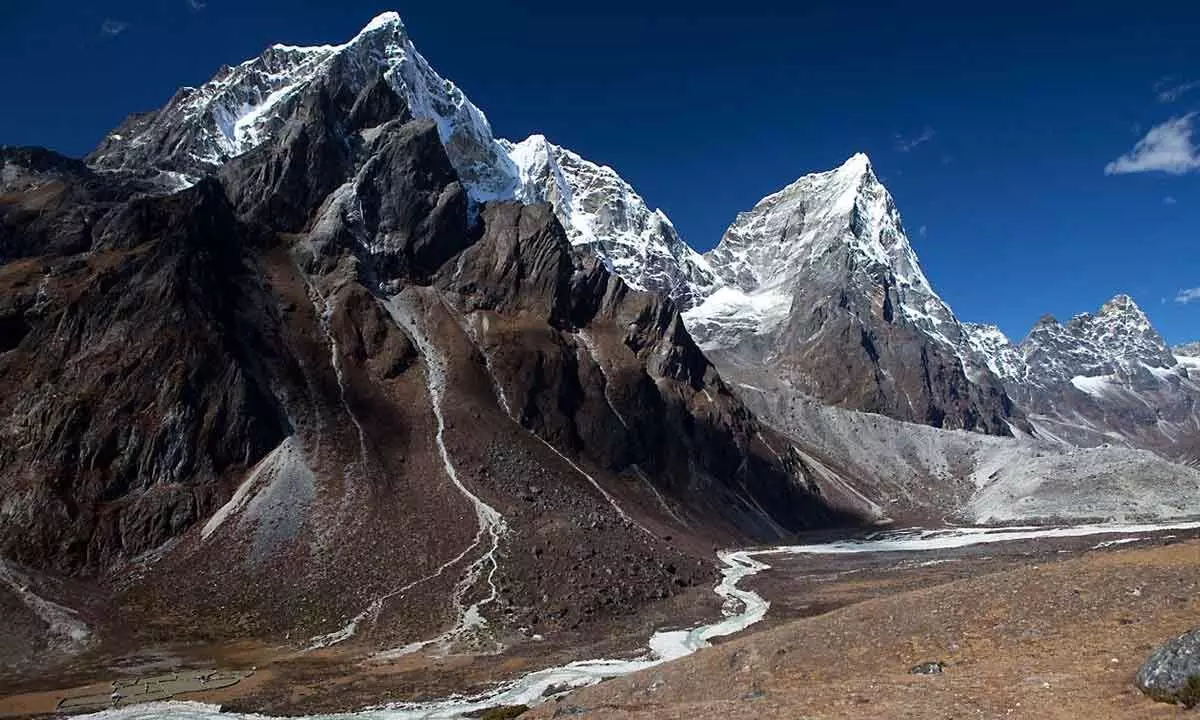Western Himalaya more prone to climate risks: IIT-M

While the Eastern Indian Himalayan Region housed the top three risk-prone districts, the Western Indian Himalayan Region faced a higher overall risk. More than two-thirds of Western Indian Himalayan Region districts (32 out of 47) fell into the highest and high-risk categories. In contrast, the Eastern Indian Himalayan Region had more than three-fifths of its districts (39 out of 62) categorised as either low or lowest risk
Chennai: The western Himalayan region in India exhibits a higher overall climate change-induced risk compared to the eastern region, according to a study by researchers at the Indian Institute of Technology(IIT), Madras, on Friday.
In a study published in the peer-reviewed International Journal of Disaster Risk Reduction, the team conducted a risk assessment and ranked 109 administrative districts pan-Indian Himalayan Region based on the latest Intergovernmental Panel on Climate Change (IPCC) criteria.
The assessment carries significant implications for policymakers as it is critical to identify districts vulnerable to climate change and the extent of their vulnerability before addressing risk, said the researchers.While the Eastern Indian Himalayan Region housed the top three risk-prone districts, the Western Indian Himalayan Region faced a higher overall risk.
More than two-thirds of Western Indian Himalayan Region districts (32 out of 47) fell into the highest and high-risk categories. In contrast, the Eastern Indian Himalayan Region had more than three-fifths of its districts (39 out of 62) categorised as either low or lowest risk.
“The heightened risk in the Western Indian Himalayan Region results from the western region experiencing higher hazards and greater exposure compared to the eastern region. Although the Eastern Indian Himalayan Region is highly vulnerable overall, its relatively low scores in hazard and exposure prevent it from being more prone to risk,” said Aayush Shah, Research Scholar, IIT Madras, in a statement.
“The Eastern Indian Himalayan Region districts with the highest and high-risk scores exhibit similarities to western himalayan region districts, displaying elevated rankings in hazard and exposure indices,” he added.The Western Indian Himalayan Region also demonstrated elevated rankings in hazards and exposure indices.
Himachal Pradesh’s Shimla was identified as the most hazard-prone district in the Indian Himalayan Region while Kiphire, Nagaland, was identified as the least hazard-prone district.
The Eastern Indian Himalayan Region is observed to be less inclined to hazards, housing all 25 districts in the lowest hazard district category and 51 out of its 62 districts falling into the lowest, low and medium hazard categories.
Nagaland and Mizoram predominantly have their districts in the lowest hazard districts category and none outside the lowest and low hazard district category, indicating them to be the two least hazard-prone states in the IHR.
“We have used the latest method suggested by the IPCC, making our index a standardised measure acceptable internationally. Further, we have used data from multiple publicly available sources to construct the risk index. This makes our index reliable and replicable,” said Krishna Malakar, Assistant Professor (Climate Policy), Department of Humanities and Social Sciences, IIT Madras, in the statement.
“The Himalayan region is extremely vulnerable to climate change because of its geographical as well as demographic characteristics. The findings of our work will enable policymakers and disaster managers to identify the regions at risk and the underlying reasons for the risk. Consequently, this will enable them to design their plan of action,” Krishna added.














